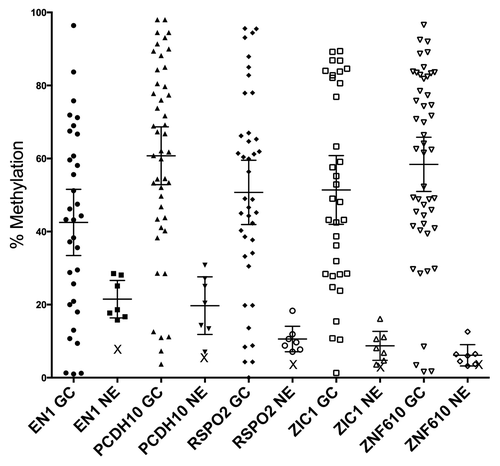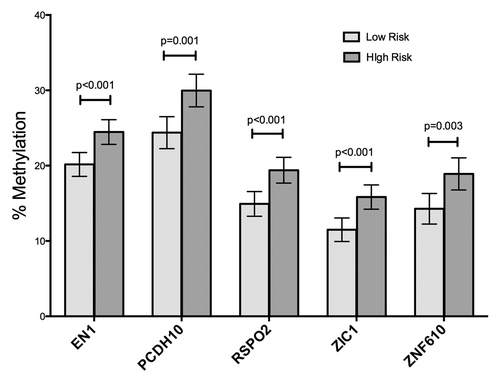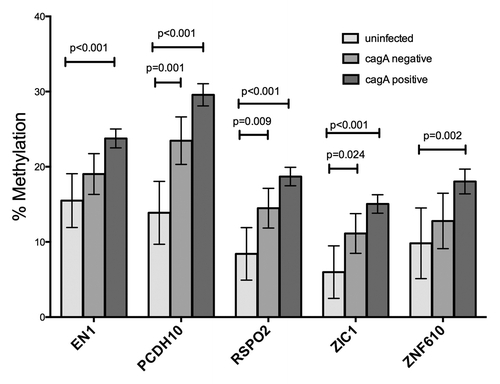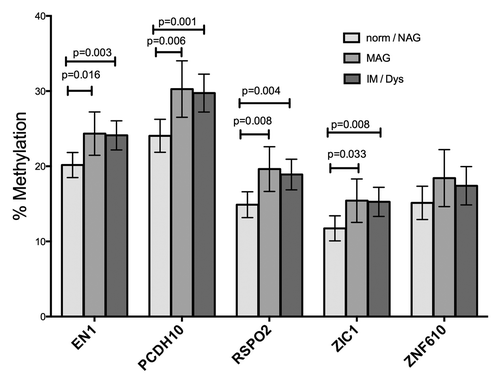Figures & data
Figure 1. Methylation measurements from gastric cancers, control epithelia, and normal blood. Pyrosequencing measurements of gastric cancers reveal a large increase compared with control epithelia (p < 0.0001 for each gene). Bars indicate means, with 95% CI. X = value for pooled normal blood DNA. GaCa, gastric cancer; NE, non-tumor gastric epithelia.

Table 1. Study population and characteristics of infecting H. pylori strains
Figure 2. Area of residence and methylation. Geographic location of residence of the subjects was significantly associated with levels of methylation in the 5 genes, both in the univariate and multivariate models. Bars indicate means, with 95% CI. LR, low risk; HR, high risk.

Figure 3. Virulence of the infecting H. pylori strain and methylation. The highly virulent cagA positive, vacA s1m1 strains were associated with highest levels of methylation in the 5 genes. The presence of the cagA gene is strongly associated with the presence of vacA s1 and m1 alleles. Bars indicate means, with 95% CI. Uninf, subjects having no detectable H. pylori infection; cagA negative, methylation in biopsies from subjects with H. pylori strains lacking the cagA gene; cagA positive, methylation in biopsies from subjects with H. pylori infections bearing the cagA gene.

Figure 4. Histological diagnosis and methylation. Pyrosequencing measurements from gastric biopsy DNA samples were stratified by the most advanced gastric lesion diagnosed in the subjects. Histological diagnosis was significantly associated in the univariate model with methylation in 4 of the 5 genes, but lost significance in the multivariate model, when cagA status was included.
